If there’s any cetacean that sets the North Pacific apart from the rest of the world, it’s the gray whale (Eschrichtius robustus). Gray whales are a very familiar species, as their skin color and overall appearance make them easily distinguishable from other baleen whales. Gray whales have been traditionally placed in their only family from other baleen whales, Eschrichtiidae, based on their morphology. However, modern molecular data suggests that gray whales evolved from within the rorqual family, Balaenopteridae. Gray whales currently live in the North Pacific, with interbreeding western and eastern populations. There was once an Atlantic population, but they were hunted to extinction by the early 1700s. However, climate change has led to a small number of individuals traveling into the Atlantic, with multiple sightings in the Southern Hemisphere. As gray whales migrate from their Baja Peninsula natal/breeding grounds towards the Arctic to feed, they may travel over 20,000km, the longest migration of any mammal. As adults gray whales average between 12.6-13.3 meters when physically mature and weigh between 22-25 metric tons, with females slightly larger than males. They can grow to a maximum of 15.6 meters and an estimated 45 metric tons. What makes gray whales historically significant is how their population nearly recovered to carrying capacity after being brought to near extinction by the early 20th century. The latest estimate was over 26,000, lowering the IUCN status of the eastern population to ”Least Concern”, however, the western population is still labeled as ”Endangered”. Gray whales skim-feed at the surface and suction-feed along the seafloor, taking in a variety of benthic and planktonic prey such as amphipods, mysids, isopods, crabs, fish eggs, and squid. Grey whales have few predators, heavily preyed upon by killer whales and occasionally by larger sharks as calves.
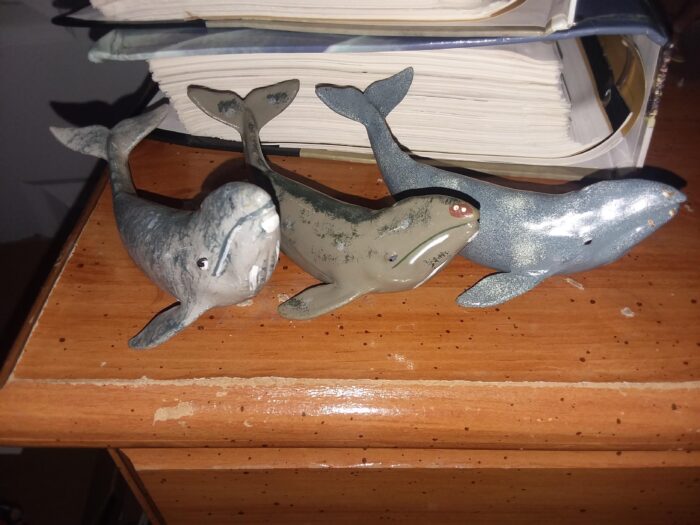
Today is another return to Safari Ltd’s Monterey Bay Aquarium collection, a scaled line of marine animal figures made in collaboration with the Monterey Bay Aquarium’s experts 30 years ago. Even after the Carnegie Collection being fully retired, the MBA line continues 30 years later with 14 of the 24 releases still in production today. Now we’re reviewing the gray whale calf from this collection, after having covered the adult over a year ago. These two were part of the original set released in 1991.
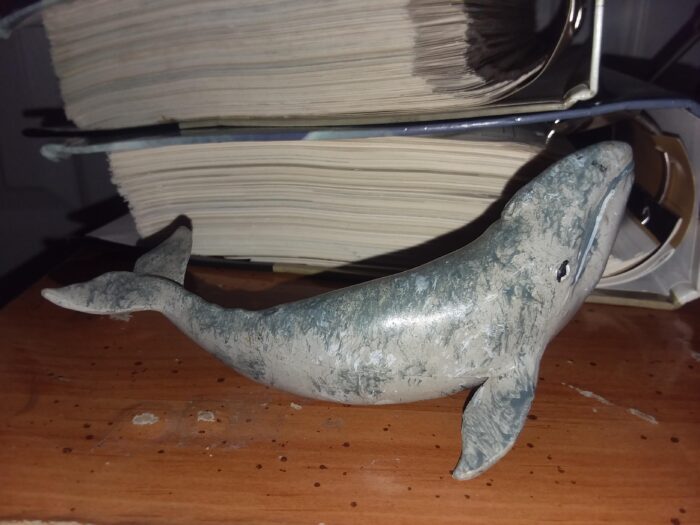
The calf measures about 137.5 mm in length. The official marketed scale of this calf is 1:40, corresponding to a calf about 5.5 meters in length. That’s a bit larger than the typical newborn, so this calf is likely a few weeks old. The figure is posed in a rather playful position compared to the alt, with the back arched as the head points upward.
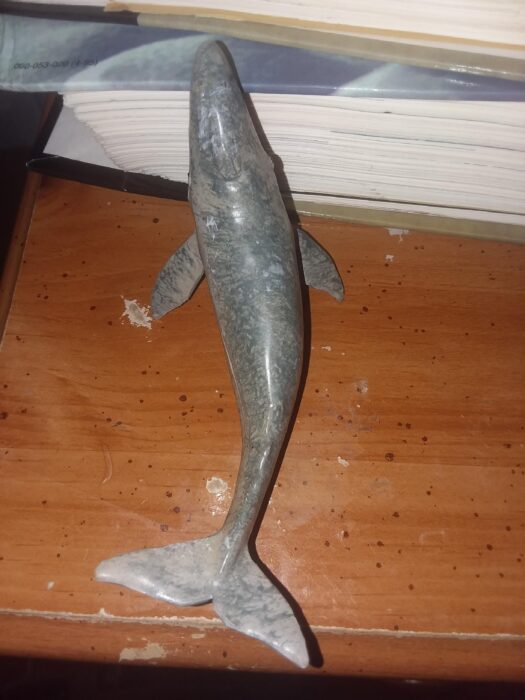

As for the sculpt, it’s pretty on-par compared to most members of this line. The head size, flukes, and overall anatomy align nicely with what I can find on calves. The blowhole and throat grooves are present and so are the navel and a tiny genital slit. There are even tiny barnacles on the tip of the snout. Overall, this sculpt leaves no room for any complaints.
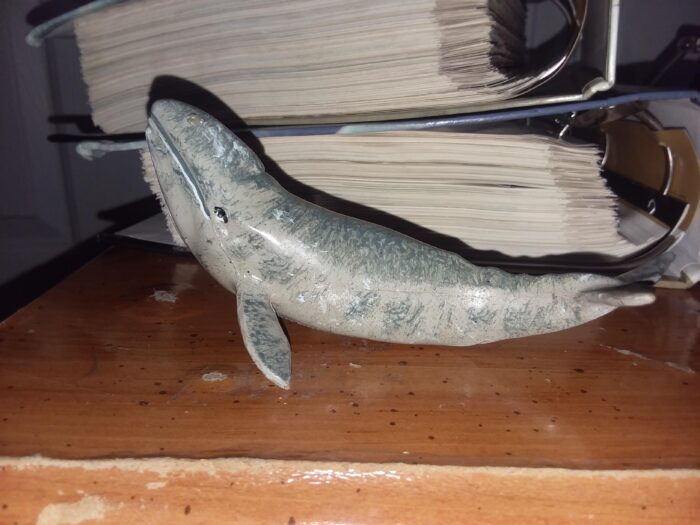
Now onto the paintjob. As mentioned before in previous reviews of MBA figures, all the figures of this line have atleast 2 or 3 paintjob variants over the course of their production. Both the gray whale adult and calf possess 3 paint jobs. The figure presented so far is one of the original variants from the 90s. This one, in particular, corresponds to the adult that was previously reviewed, as can be seen from the similarities in the color scheme. Going forward I will address it as variant A. The base color is light gray with streaks and patches of a darker gray across the body and along the back. There are also some minor light streaks, which form parallel lines across the throat grooves and mouth, just as in the adult. The barnacles are a greenish-brown color. Overall, this paintjob seems very fine, as mentioned before in another review, the paintjob of the gray whale is hard to ”screw up” due to the intraspecific variation in base pigmentation, mottling, etc.

The next one is another 90s variant. I can’t be too sure whether this one or the previous variant was the original version as both of these figures came with the same version of the tags. This next calf is also paired with its own adult, which I chose to display here. I will refer to this pair as variant B.


The base color for the B variant is relatively more brown and green than the A variant. The mottling of white spots is more conserved and neatly applied, and white lines are still present around the mouthline and throat grooves. The easiest way to tell which adult variant it was produced with is the color of the barnacles, which are white within a bright orange halo. One improvement is that the eye on variant B is smaller and more realistic than on variant A, which leads me to believe this variant was what came second. Overall this paintjob is also pretty good, the slight greenish look is probably less accurate, but the overall execution is more visually pleasing.
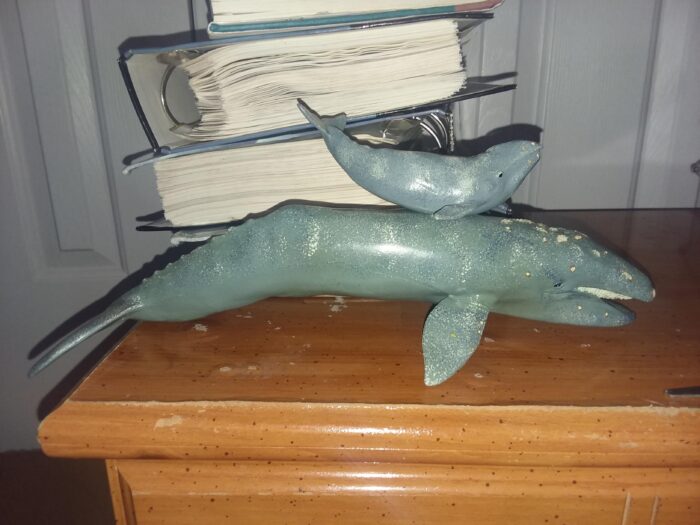
The last one to discuss for this review is the latest variant, corresponding to the current paintjob for the adult. This pair will be variant C.
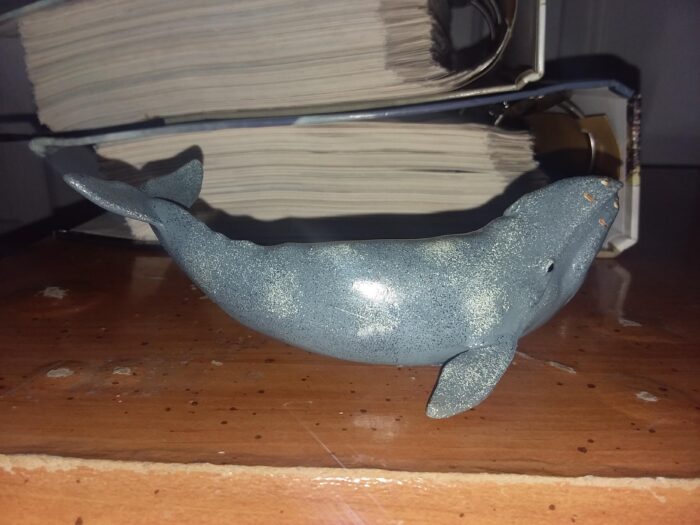
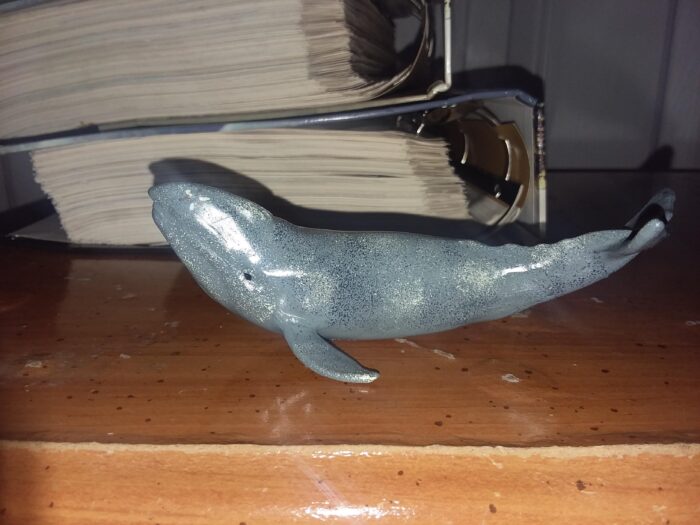
Variant B closely matches its adult counterpart. This time the base color is a light-gray that seems almost blue. The light and black patches are much more diffused and the barnacles are now painted with more precise white and brown dots. Other than those major changes, the material is also more flexible than the previous casts. This one is certainly the most realistic of the three and likely my favorite. Nonetheless, all of these paint jobs are well done.
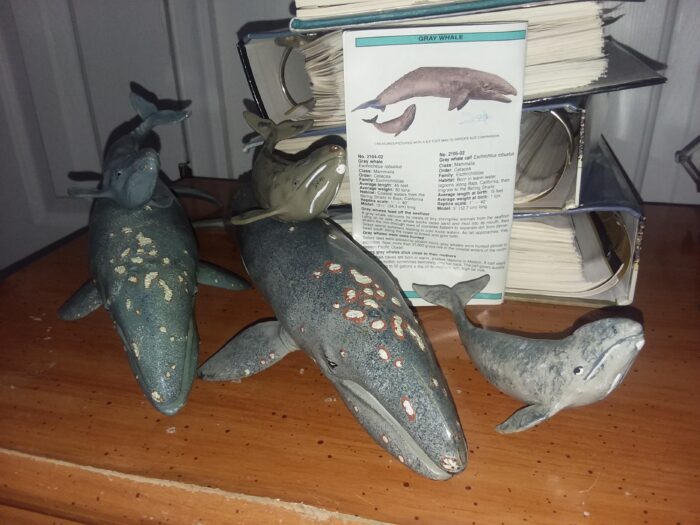
The MBA gray whale calf is a very wonderful figure. It’s well-sculpted and well-painted, falling very much in line with the rest of the MBA collection. I would even go further and say that the calf aged better than the adult figure, as I can’t say there are any other gray whale calf figures that have surpassed it. Unfortunately, the calf is among the 10 figures from the line that has been retired, which compounds the issue of there being very few gray whale calf figures. Those interested will need to resort to heavy monitoring of the secondhand-listings as this calf is quite rare.
Disclaimer: links to Ebay and Amazon on the AnimalToyBlog are affiliate links, so we make a small commission if you use them. Thanks for supporting us!



